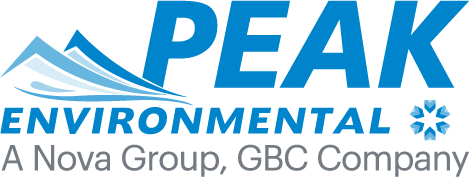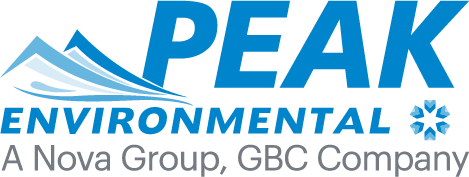Environmental Remediation
Environmental Remediation
Environmental remediation must result in conditions that are protective of human health, safety, and the environment. The number of applicable remediation options for a given project can be twenty or more, depending on contaminant type media affected, and property use and can range from basic removal to long term, high complexity remediation systems. Therefore, a structured approach to alternative selection is required to support effective decision-making based on information available at the time.
When active remediation is necessary, Peak’s Remedial Alternative Selection (RAS) process provides a comprehensive approach to evaluating alternatives and selecting the best remedial option for a given Site. Evaluated options include multiple variations of physical removal and disposal or treatment, in-situ treatment systems, abiotic destruction & in-situ chemical oxidation (ISCO) injections, aerobic and anaerobic bioremediation amendment injections, and containment technologies, each potentially applicable to soil, groundwater, surface water, sediment, vapor or combinations thereof.
The process considers the effectiveness for contaminants present, client goals, regulatory mandates and restrictions, future use of property, duration and schedule, cost, logistics, accessibility, disruption to operations, and post-remedial requirements. A typical site is evaluated in two steps. Initially, a wide set of remedial alternatives applicable to the type of contaminant and the affected media are screened. Subsequently, potentially applicable alternatives are compared based on a series of detailed evaluation metrics to further reduce the list of best alternatives and rank them.
Costs & Financials Estimate life cycle cost, funding, capital costs, expenses, cash flow
Remedial Objective Success Verify demonstrated effectiveness of alternative
Constructability Confirm logistics and site use, infrastructure proximity
Safety Minimize HSSE risks to team and third parties
Integrity Maximize long-lerm effectiveness/reliability
Related Projects
Anne Ortlieb joins the Peak Team!
Anne Ortlieb has joined Peak Environmental, A Nova Group, GBC Company as a Staff Scientist. Anne is a graduate of Ramapo College of New Jersey with a Bachelor of Science degree in Environmental Science. As a Staff Scientist, she will complete health and safety...
Peak Environmental Supports First BRIP Financing Approval
Jeffrey Campbell June 13, 2024 The New Jersey Economic Development Authority (NJEDA) kicked off the new $300M Brownfield Redevelopment Incentive Program (BRIP) in 2023 to provide funding for the redevelopment of under-utilized real estate in New Jersey....
Peak Environmental Receives NJBIZ Leader in Real Estate Construction & Design Award
Peak Environmental, A Nova Group, GBC Company (Peak) has been named a Leader in Real Estate Construction and Design by NJBIZ at their 2024 awards event. The award was based primarily on Peak’s participation in the redevelopment of an underutilized property in Montvale...
Discuss Your Project
Service Areas
Site Remediation
Licensed Site Remediation Professionals
Regulatory Compliance
Phase I / Due Diligence
Contact
Peak Environmental, A Nova Group, GBC Company
732-326-1010
info@peak-environmental.com
26 Kennedy Blvd, Suite A
East Brunswick, NJ 08816
Industries
Legal
Real Estate
Financial
Insurance
Petroleum
Manufacturing
Materials
Construction
Education


